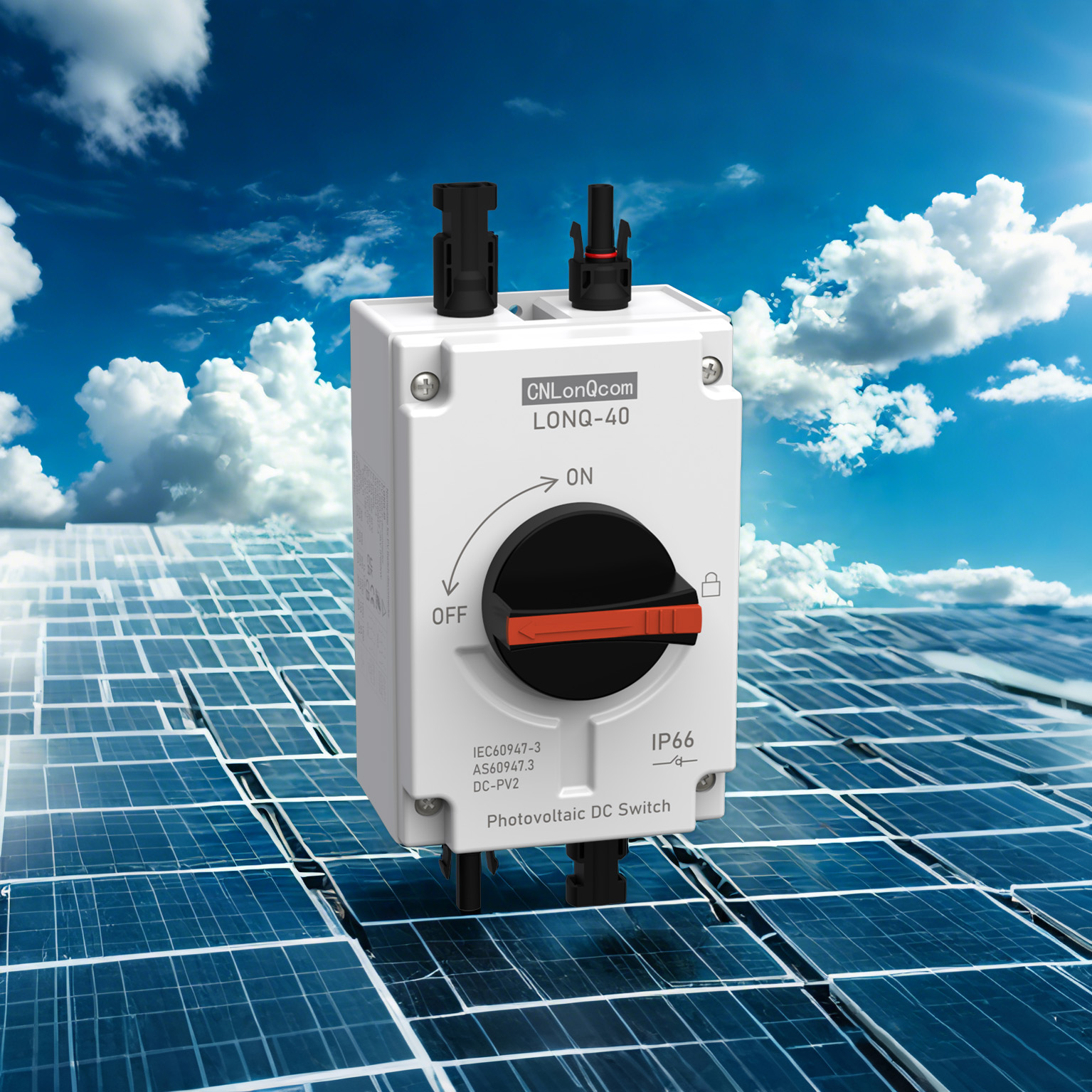The "Safety Gate" in Photovoltaic Systems: The Critical Role of Disconnect Switches
2025-03-25
In the "family" of photovoltaic power generation systems, there exists a silent guardian - the disconnect switch. Though inconspicuous, this component is crucial for ensuring safe system operation. Let's explore the importance of this vital "safety guardian."
Disconnect Switch: The Safety Gate of Power Systems
A disconnect switch, as the name suggests, is a switching device used to isolate circuits. Its key characteristics include:
(1) Visible breaking points
(2) No arc-extinguishing capability (strictly prohibited for load operation)
(3) Primary function of providing electrical isolation protection
Special Features of PV Disconnect Switches
PV systems require specialized disconnect switches that differ significantly from conventional switches:
DC-Specific Design:
PV systems generate direct current, where DC arcs are more difficult to extinguish than AC arcs, necessitating special design considerations.
Higher Voltage Ratings:
While household AC systems operate at 220V, PV systems can reach 600V or even 1500V.
Dual Protection:
Typically requires simultaneous disconnection of both positive and negative poles to ensure complete isolation.
Weather Resistance:
Features IP67 waterproof enclosures to withstand harsh outdoor environments, with PA materials that effectively resist UV radiation, high temperatures, and humidity.
Four Essential Reasons for Installing Disconnect Switches in PV Systems
(1) Safety Maintenance Requirement:
PV modules continuously generate power when exposed to light, making disconnect switches essential for complete power isolation.
(2) DC Arc Protection:
Professional disconnect switches can control arc duration within 2ms.
(3) System Maintenance Needs:
Inverter maintenance and system expansion operations require guaranteed complete power isolation.
(4) Regulatory Mandate:
International standards like IEC 60947-3 explicitly require installation.
Professional Installation Standards
(1) Installation Location Requirements:
DC input terminal of inverters (mandatory)
Output terminal of combiner boxes (recommended)
Within ≤3 meters of inverters (standard requirement)
(2) Standardized Installation Process:
① Confirm complete system power-off
② Select well-ventilated installation locations
③ Implement vertical installation (tilt ≤5°)
④ Use PV-specific MC4 connectors
⑤ Tighten terminals to specified torque (typically 4-5N·m)
⑥ Install dustproof and waterproof sealing rings
Safety Operation Considerations
(1) Operation Standards:
Must use insulated tools
Wear 1000V insulated gloves during operation
Disconnect AC side before DC side
(2) Maintenance Requirements:
Monthly mechanical operation tests
Quarterly contact condition inspections
Annual contact resistance measurements (<50mΩ)
(3) Selection Criteria:
Voltage rating ≥1.25× system voltage
Current rating ≥1.56× Isc
Must have TUV/UL/VDE certification
Frequently Asked Questions
Q: Can regular switches be used instead?
A: Absolutely not! Conventional switches cannot reliably interrupt DC current and may easily cause arc faults.
Q: Do disconnect switches need daily operation?
A: No. They primarily serve as safety backup devices and should only be operated when necessary.
Q: How many disconnect switches does a system need?
A: At minimum, one at the inverter input; larger systems should add them at combiner boxes.
Conclusion
PV disconnect switches function like household fuses - inconspicuous in daily operation but potentially life- and property-saving in critical moments. Three elements are indispensable: quality products, standardized installation, and regular inspections. Remember: in PV systems, safety must always come first!
For those planning PV systems or with safety concerns about existing installations, CNLonQcom provides expert consultation to equip your system with reliable "safety gates." Safe electricity use begins with choosing the right disconnect switch!


